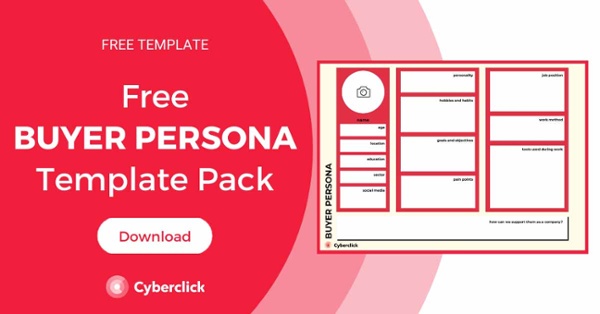As digital marketing evolves, email remains one of the most powerful tools for brands to engage with customers. However, the strategies that worked in the past won’t suffice in 2025. New technologies, shifting consumer expectations, and a heightened focus on privacy and personalization are driving the future of email marketing. Let’s explore the top 14 trends that will shape email marketing in 2025.

1. Hyper-Personalization with AI and Data Analysis
In 2025, hyper-personalization will be a cornerstone of email marketing. Powered by AI and sophisticated data analysis, marketers can now create messages tailored to each individual. From dynamic product recommendations to personalized subject lines based on browsing history, AI-driven insights will allow brands to deliver more relevant content. The more personalized the email, the higher the engagement and conversion rates.
2. Mobile-First Approach
With mobile devices accounting for the majority of email opens, adopting a mobile-first approach is non-negotiable in 2025. Emails will need to be designed with responsive layouts that prioritize readability on smaller screens. This means larger buttons, short and more concise copy, and images optimized for fast loading on mobile connections. Brands that don’t prioritize mobile will risk losing their audience’s attention.
3. Interactive Elements in Emails
Interactivity is key to keeping users engaged. In 2025, we will see more brands incorporating interactive elements directly into their emails, such as polls, quizzes, carousels, and even in-email purchasing. By eliminating the need to click out of the email, these features create a more engaging experience and help keep users on the brand’s platform longer.
4. Advanced Automation and Customer Journey Mapping
Automation is no longer just about scheduling a series of drip emails. By 2025, advanced automation combined with customer journey mapping will allow brands to send hyper-targeted messages at every stage of the buyer’s journey. AI will help predict customer behaviors, triggering emails based on real-time actions like browsing a product page, leaving items in a cart, or completing a purchase. This leads to timely, relevant communications that nurture prospects more effectively.
5. Privacy-Focused Strategies
As privacy regulations tighten and consumers grow more aware of data security, privacy-focused email marketing strategies will be essential in 2025. GDPR, CCPA, and similar regulations are making it critical for brands to be transparent about how they collect and use data. Consent will become the foundation of trust, and brands that emphasize data security and privacy in their email communications will be the ones to build stronger, lasting relationships with their customers.
6. AMP for Emails: The New Standard
AMP (Accelerated Mobile Pages) technology is slowly transforming email into an interactive and dynamic experience. By 2025, AMP will be more widely adopted, allowing recipients to engage with content directly within the email, whether it's RSVPing to events, filling out forms, or browsing product catalogs without leaving their inbox. While it’s not yet the standard for all brands, AMP will be a game-changer in industries that rely on high engagement rates.
7. User-Generated Content
User-generated content is one of the most authentic ways to connect with your audience. By 2025, brands will increasingly incorporate UGC into their email marketing strategies, showcasing customer reviews, photos, and testimonials. UGC not only builds trust but also fosters a sense of community. With audiences, especially Gen Z, craving authenticity, this trend will be a powerful driver for engagement.
8. Minimalist Design in Email Marketing
In an era of information overload, minimalist design will be essential for cutting through the noise in 2025. Simple, clean layouts that focus on key messaging and visuals will help grab the reader’s attention quickly. Minimalism also enhances mobile responsiveness and ensures that emails load faster, improving the user experience.
9. Accessibility in Email Design
Inclusivity is no longer optional. By 2025, email marketing will prioritize accessibility, meaning that content can be easily read by everyone, including those with disabilities. This means using high-contrast colors, alt text for images, and readable fonts, as well as considering screen readers and other assistive technologies. Brands that embrace accessible email design will not only comply with regulations but also broaden their reach to a more diverse audience.
10. Email Integration with Omnichannel Marketing
Integration between email and other digital channels will be crucial in 2025. Omnichannel marketing strategies allow brands to maintain consistent messaging across email, social media, SMS, and even in-store experiences. Email will play a central role in guiding customers through various touchpoints, providing personalized content based on their interactions with the brand across platforms.
11. Implementation of Brand Indicators for Message Identification
BIMI (Brand Indicators for Message Identification) enables brands to display their logo next to their email in the recipient’s inbox, improving brand recognition and increasing trust. While not universally adopted yet, by 2025, we expect more brands to embrace BIMI to authenticate their emails and stand out in crowded inboxes. This will help reduce the risk of phishing attacks and improve overall email deliverability.
12. Voice-Activated Interactions
As voice assistants like Siri, Alexa, and Google Assistant become more integrated into everyday life, voice-activated interactions may find their way into email marketing by 2025. While still in its infancy, brands could leverage this technology to allow users to engage with emails through voice commands, providing an innovative way to enhance accessibility and engagement.
13. Sustainability and Eco-Friendly Messaging
Consumers in 2025 will be more eco-conscious than ever. Brands that demonstrate sustainability in their email marketing campaigns—whether through promoting eco-friendly products, reducing email frequency to cut digital carbon footprints, or showcasing sustainability efforts—will resonate with ethically driven consumers. This trend aligns with the broader movement toward sustainability in all forms of marketing.
14. AI-Driven Subject Line Optimization
In 2025, artificial intelligence will play an even larger role in optimizing subject lines for higher open rates. Using machine learning algorithms, email marketing platforms will analyze past campaign data to predict which subject lines are most likely to resonate with specific segments of an audience. AI will continuously learn from customer behavior, helping marketers write compelling subject lines that drive engagement. This trend will allow brands to maximize the effectiveness of their email marketing by standing out in crowded inboxes.
Licenciada en Publicidad y Relaciones Públicas por la UAB. Digital Marketing Strategist en Cyberclick.
Degree in Advertising and Public Relations from the UAB. Digital Marketing Strategist at Cyberclick.






Leave your comment and join the conversation